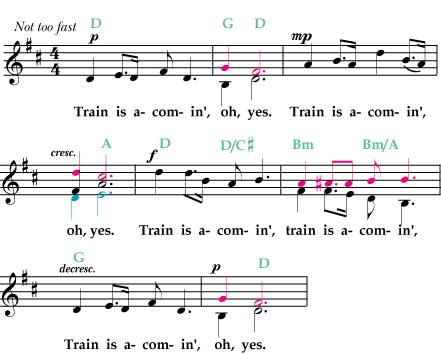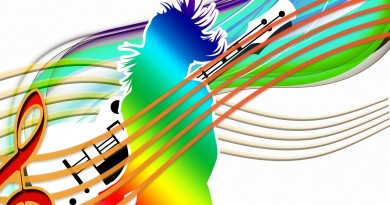Different octaves in Music Staff
Having now became acquainted with the names of the smaller divisions of the tone chain or tone series, let us see by what means we may distinguish the nine different octaves. On the staff, the difference is readily seen, but can we not
distinguish the several octaves without the aid of the staff! It would have been a reasonable plan to have called the several octaves in their regular order, say the lowest the first, the next the second, etc., but this plan has not been adopted. The lowest scale, beginning with one tone produced by 32 vibrations, is called the twice marked Contra or Counter C, and is written as follows: C, a capital C with two lines above
Or below it. This note occupies the following place in the staff  seated by m small letter c with two marks over it, c. The entire octave from this tone to B is called the twice-marked Contra octave.
seated by m small letter c with two marks over it, c. The entire octave from this tone to B is called the twice-marked Contra octave.
Naming octaves on a music staff
- The C that follows and which is written on the staff, in this wise
 Is called the contra or Counter C, and is represented by a capital C with one line above or below. The entire octave from this tone to the next B above is called the Contra octave.
Is called the contra or Counter C, and is represented by a capital C with one line above or below. The entire octave from this tone to the next B above is called the Contra octave. - The C following
 is called the large C, and is represented by a capital C. Every tone in the scale
is called the large C, and is represented by a capital C. Every tone in the scale
from this tone upwards, is called the large octave. - The C following
 is called the small C, and is represented by a small letter c. The entire octave
is called the small C, and is represented by a small letter c. The entire octave
from this c upward to B, is called the small octave. - The next C
 is called the once marked C, and is represented by a small c with one line above.
is called the once marked C, and is represented by a small c with one line above.
The entire octave from this tone upward is called the once marked octave. - The following
 is called the twice-marked C, and is represented by a small letter c with two marks
is called the twice-marked C, and is represented by a small letter c with two marks
over it. The entire octave from this tone is called thetwice-marked octave. - The next octave is called the
 thrice-marked octave, and so on throughout the entire series of tones.
thrice-marked octave, and so on throughout the entire series of tones.
Naming several octaves by feet
The several octaves are also sometimes called by feet. The twice-marked Contra C, being produced by a thirty-two foot pipe, it called thirty-two foot tone. For this same reason the Contra C’ is called a sixteen foot tone, the large C an eight foot tone, the small c a four foot tone. The once marked c a two foot tone, the twice marked C a one foot tone, the thrice marked a half foot tone, etc.
The question is often asked, why is the lowest tone called C, and not A in harmony with the alphabetical order? The reason is as follows: The tone which was formerly regarded as the lowest one was called A, but as the tone system was extended, downward especially, by adding new tones, it so happened that the lowest tone in the regular order happened to be called C. The names have never been changed and so comes, that our lowest tone is called C’ and not A, as it should be called.




